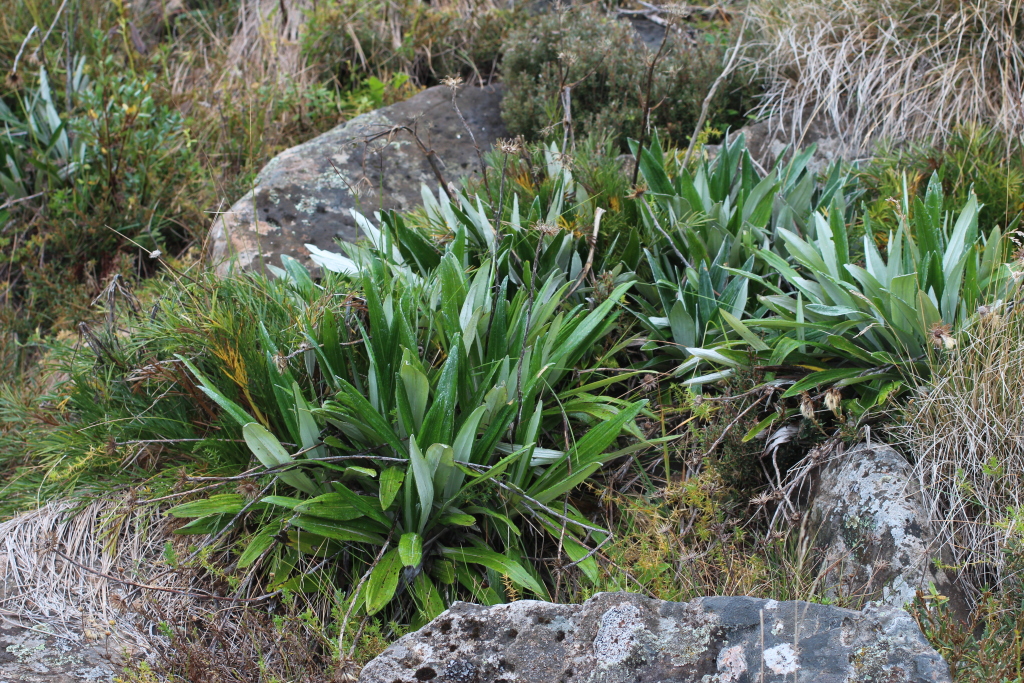Celmisia latifolia
(F.Muell. ex Benth.) M.Gray & GivenRootstock very tough, branched, erect, woody. Leaves oblanceolate to narrowly oblanceolate or elliptic, loosely cylindrically folded when young, (12–)18–26 cm long, 1.5–3(–5) cm wide, grey-green above with thin, lustrous, more or less deciduous pellicle, tomentum beneath dense, compact, satiny, hairs terete (under high magnification), covered by a very thin, silvery pellicle which soon breaks up into microscopic hair-like fragments, midrib obscure, margins flat or only slightly recurved. Scape woolly-tomentose but often sparser than in other species, 28–45 cm high; capitulum c. 5–7 cm diam.; intermediate involucral bracts narrowly triangular-acuminate, c. 14–20 mm long, c. 2.5 mm wide, glabrescent to tomentose with long webby hairs, tips flushed reddish-purple, margins long-fimbriate; ligules 18–25 mm long, white. Cypselas c. 6–12 mm long, with short, appressed antrorse hairs; pappus 4–9 mm long. Flowers Dec.–Feb.
HSF, HNF, VAlp. Endemic in Victoria. Confined to higher subalpine meadows, margins of wet heaths and Snow Gum woodlands from Mt Wellington area north to Mt Cobbler (including Mt Buller and environs) and a little way east along the Barry Mountains toward Mt Hotham. Sometimes forms pure stands up to c. 10 m diam.
This very distinctive species is the largest in Australia and appears to be closely related to the New Zealand endemic C. hookeri Cockayne.
Gray, M.; Given, D. (1999). Celmisia. In: Walsh, N.G.; Entwisle, T.J., Flora of Victoria Vol. 4, Cornaceae to Asteraceae, pp. 912–916. Inkata Press, Melbourne.
 Spinning
Spinning